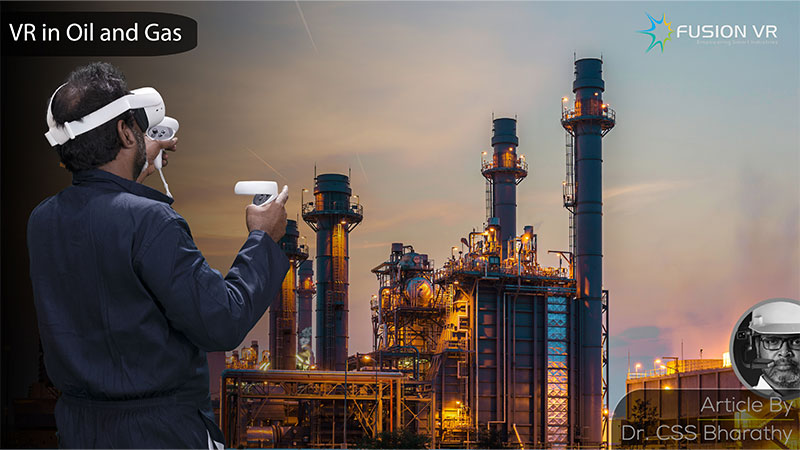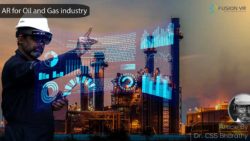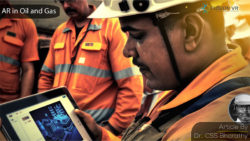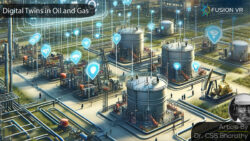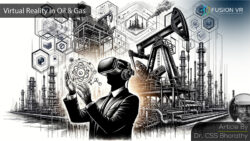One of the most important industries that is under pressure to transform itself is the energy industry. The major driver of the energy industry is unmistakably the oil and gas sector. Fossil fuels account for nearly 80% of the world’s energy needs and most of this is met by the oil and gas industry. Oil and gas not only provide energy needs but are also the raw materials for plastics and several key intermediates that make modern life possible.
It is, therefore, important to understand that the oil and gas industry contributes in many ways to the life that we live today. However, it is equally important to recognise that the emissions released from the burning or consumption of fossil fuels are driving climate change, and drastic changes need to be made. The industry has to become more efficient, innovative and resilient to the demands of today and what is expected tomorrow.
For the oil and gas industry to redefine itself, there are key areas where transformation needs to happen. This begins with the way we design facilities, train people and, most importantly, how we operate and maintain facilities safely, reliably and efficiently. Virtual Reality is one of the most exciting and consequential technologies of the Fourth Industrial Revolution.
It is popularly referred to as Industry 4.0 and is essentially a suite of technologies that will change today’s manufacturing culture into a smart manufacturing one. VR in oil and gas industry has been steadily gaining traction, and the industry has begun to see its vast transformative potential.
Virtual reality technology is being used by engineers and technologists to create precise 3D models of production platforms and rigs which can be viewed by multiple teams located at different parts of the world in real time to collaboratively develop the most appropriate design demanded by the client. This real-time collaborative approach saves a huge amount of time in the design process. Detailed design on paper and even conventional 2D tools require development and review efforts separately by contractor and client, followed by approvals.
Virtual reality enables an integrated approach involving both groups which saves time and cost for all parties involved. For example, the oil and gas giant Shell has been using ICE, an Immersive Collaboration Environment, which has accorded their engineers and designers to collaborate on projects and significantly enhance the overall outcomes of those projects. Other oil and gas majors such as BP, Exxon Mobil, Total, Chevron are also deploying virtual reality technologies in various activities.
Another important aspect of redefining the oil and gas industry is its ability to train and prepare its workforce to meet immediate and future needs. One of the major causes of industrial accidents is due to human error. Though the level of automation and intelligent safety systems has increased, human beings are required to make important operational decisions. Human error has crept in despite advances in design, and the only way to reduce the incidence of such events is through better training which ultimately enhances better decision-making.
Virtual Reality Training Simulators provide the solution to all training challenges that are in the oil and gas industry. Hands-on training is not easily delivered in a fully operating oil and gas facility. Often they are in remote or industrial locations that are highly protected.
It’s not possible to stop a running process and explain its operation or provide practice to a new employee. Stopping even temporarily will turn out to be an expensive affair and leads to a loss of revenue. VR Training Simulators recreate the actual plant in a virtual 3D environment.
This is an accurate replica of the unit which can be navigated by a trainee using the VR headset. The user is immersed in the virtual environment and quickly adapts to it. The VR training offered is 4X more effective than conventional training and enables greater retention.
A trainee operator is provided with the required step-by-step guidance on how to operate the unit. Mistakes can be made with no real consequences. The training is thereby gamified and allows the trainee to practice and master the essential skills that are necessary for him/her to operate the unit safely and reliably.
This training is applicable for operations, maintenance, safe work practices, inspections, emergency response and industrial hygiene. The scope and breath of application of VR practical training are immense. Such operational and safety training and the competencies gained improve productivity and reduce plant downtime.
Enhancing safety makes it a great place for work and also helps in attracting the talent needed. All this has a positive impact on the industry’s bottom line, which allows companies to invest in the research and development of new technologies and processes that provide us with a chance to fight climate change.
The next major area to redefine in the oil and gas industry is how we maintain facilities and reduce downtime. The oil and gas operations use large capital assets, and these assets are really complex and sophisticated. It requires experts from the OEMs for guidance and support to fix any issue.
Quite often, the availability of such experts and their mobilisation to remote worksites is not easy. Actually, the number of experts falls short compared to the number of facilities.
Virtual Reality Digital Twins helps an expert located in a different part of the world to provide accurate insight and guidance on the issues facing a particular machine to the team in the field. This can also be supplemented by real time Augmented Reality expert support. Training in-house talent on the proper sequence of troubleshooting, disassembly and assembly procedures is provided with VR simulators. Such efforts, though requiring a one-time capital investment, begin paying off with its first intervention itself.
These are the key areas that require focus and support from the oil and gas industry CEOs, CTOs and CFOs, plus the plant’s operations and maintenance leadership teams. The initiatives outlined above will help to redefine the industry and prepare itself to effectively meet the challenges of the future, including virtual reality in oil and gas industry.

